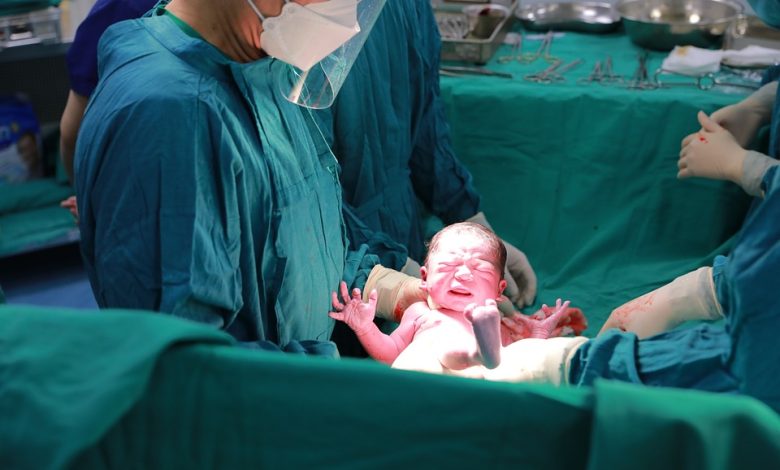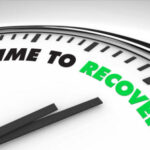Best Pain Medication For C-Section Recovery

A Caesarean section, commonly known as a C-section, is a surgical procedure in which a baby is delivered through an incision made in the mother’s abdomen and uterus. C-sections can be planned in advance for medical reasons or performed as an emergency procedure when there are complications during labor.
The recovery period after a C-section can vary from person to person, but it usually takes longer than the recovery period after a vaginal delivery. Pain during C-section recovery is common, and it can be caused by a variety of factors.
1. Incision pain: The most common source of pain after a C-section is incision pain. During the surgery, the doctor makes a horizontal or vertical incision in the abdomen and uterus to deliver the baby. The incision site may feel tender and sore for several weeks after the surgery. The pain may be more severe if the incision was made vertically.
2. Uterine contractions: After a C-section, the uterus may contract and shrink back to its pre-pregnancy size. These contractions can be painful and may feel like menstrual cramps. They are usually most intense in the first few days after the surgery.
3. Gas pain: Gas pain is another common source of pain after a C-section. The surgery can cause gas to build up in the abdomen, which can cause discomfort and pain. Walking and moving around can help relieve gas pain.
4. Back pain: Some women experience back pain after a C-section due to the spinal anesthesia used during the surgery. The anesthesia can cause muscle soreness and stiffness in the back.
5. Breastfeeding pain: Breastfeeding can cause pain after a C-section. The baby’s weight may put pressure on the incision site, causing discomfort. Women may also experience sore nipples or breast engorgement, which can be painful.
It’s important for women to listen to their bodies during the recovery period and not push themselves too hard. Walking and light exercise can help speed up the recovery process, but women should avoid strenuous activities until they have fully healed. It’s also important to follow the doctor’s instructions regarding wound care and post-surgical care to prevent complications and promote healing.
Best Pain Medication For C-Section Recovery
The choice of pain medication for C-section recovery depends on various factors such as the severity of pain, individual medical history, and the potential for side effects. In general, doctors prescribe pain medication that is safe for both the mother and the baby.
1. Nonsteroidal anti-inflammatory drugs (NSAIDs): NSAIDs, such as ibuprofen and naproxen, are often the first line of defense for pain management after a C-section. They can effectively reduce pain, inflammation, and fever. These medications are usually safe for breastfeeding mothers and do not have a significant impact on the baby.
2. Acetaminophen: Acetaminophen, such as Tylenol, is another common pain medication used after a C-section. It can reduce pain and fever but does not have any anti-inflammatory properties. Acetaminophen is safe for both the mother and the baby when used as directed.
3. Opioids: If the pain is severe, doctors may prescribe opioids, such as oxycodone or hydrocodone. These medications can effectively reduce pain but have a higher risk of side effects, such as drowsiness, nausea, and constipation. They are also potentially addictive and can cause respiratory depression, especially when used for an extended period.
4. Local anesthetics: Local anesthetics, such as bupivacaine or ropivacaine, can be injected directly into the incision site during surgery to provide immediate pain relief. These medications can also be administered through a catheter or epidural during the recovery period.
5. Muscle relaxants: Muscle relaxants, such as cyclobenzaprine, can help reduce muscle spasms and tension, which can contribute to pain after a C-section.
It’s essential to follow the doctor’s instructions when taking pain medication and avoid exceeding the recommended dose. Women should also discuss any concerns or side effects with their doctor promptly. Additionally, non-pharmacological pain management techniques, such as relaxation techniques and physical therapy, can complement pain medication to help manage pain during C-section recovery.
Non-Medical Pain Management Techniques For C-section Recovery
Additionally, non-pharmacological pain management techniques can complement pain medication to help manage pain during C-section recovery. There are several non-medical pain management techniques that can be effective in reducing pain and promoting healing during C-section recovery. These techniques may also have additional benefits, such as improving mood and reducing stress.
1. Positioning: Finding a comfortable position can help reduce pain after a C-section. It is recommended to avoid lying on the incision site and use pillows to support the body in a comfortable position while lying down or sitting.
2. Deep breathing: Deep breathing exercises can help reduce tension and promote relaxation. Women can try inhaling deeply through the nose, holding the breath for a few seconds, and exhaling slowly through the mouth.
3. Gentle exercise: Light exercise, such as walking or stretching, can help improve circulation and reduce muscle tension. It is important to avoid strenuous activities or lifting heavy objects until the doctor gives clearance.
4. Heat therapy: Applying heat to the affected area can help relieve pain and stiffness. Women can use a warm compress or take a warm bath to promote relaxation and relieve pain.
5. Cold therapy: Cold therapy, such as using ice packs or a cooling pad, can help reduce swelling and inflammation, which can contribute to pain after a C-section.
6. Relaxation techniques: Relaxation techniques, such as meditation or visualization, can help reduce stress and promote healing. These techniques can be learned through classes, books, or online resources.
7. Wound care: Proper wound care is crucial for promoting healing and reducing the risk of infection. Women should follow the doctor’s instructions for cleaning and dressing the incision site.
It is important to discuss any non-medical pain management techniques with a healthcare provider before trying them, as some may not be suitable for all women or could interfere with medical treatment. A healthcare provider can also provide guidance on the most effective pain management strategies for individual circumstances.





